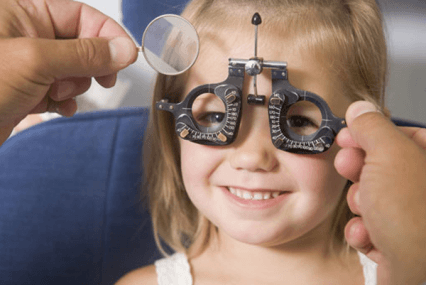As our children grow and develop, it is important to keep an eye on how their vision is faring. It is often easy to take child’s vision for granted until they start showing signs of difficulty, but early eye care is always best, especially if conditions are present.
Being armed with a few facts about pediatric vision issues is key to ensuring that the child in your life has optimal vision and eye health for the entirety of their lifetime. Here are 8 facts about children and vision to help you be better prepared.
1. Eye Exams
Comprehensive eye exams should start as early as the first year of life. If there are problems at this early phase of development, your child should have them addressed, if not solved, before they become greater issues later in life.
2. Vision Coverage
Per the website Healthcare.gov, ″all Qualified Health Plans (QHP) sold on the Marketplace include pediatric vision coverage.″ Now, there is no need to worry whether or not you can receive coverage for your child’s eye health, because it is guaranteed if you use a QHP.
3. Receive Comprehensive Testing
When your child has a vision check-up at school, most often his or her eyes are only being checked for acuity-distance, when there is a whole battery of visual skills that impact a person’s overall ability to see. Make sure your child receives comprehensive, annual check-ups from a professional optometrist.
4. Visual Memory
In a comprehensive test, children will be tested for things such as visual memory, because vision involves more than the ability to see what is in front of us, and also includes what was in front of us. Children who have poor visual memory often have difficulty with fully understanding what they see. If your child vocalizes as she is reading, this may mean that she is seeking auditory cues to assist her memory because her vision is not enough.
5. Hand-Eye Coordination
Most vision tests only seek to measure what the eyes can see, and how well they see it. However, common sense tells us that vision is a key component of everything we do, from sports to typing.
6. Warning Signs of Trouble
You and your child’s teachers are often on alert for vision problems. If you notice your child reading aloud in a mumbly voice, constantly rubbing his eyes, reacting strongly to bright light, or sitting too close to the television, then it may be time for a comprehensive vision test.
7. Amblyopia
Amblyopia is commonly known as ″lazy eye″ and can be treated. However, it is vital to treat it early, and preferably before age 8.
8. Contacts Are Available
Younger children may need to wear glasses, but as a child ages, he or she may want to switch to contact lenses to avoid the social stigma of glasses, or to play active sports more easily. Be sure to always discuss the best vision solution with your child’s eye doctor.
[Photo Via: VL.RU]


